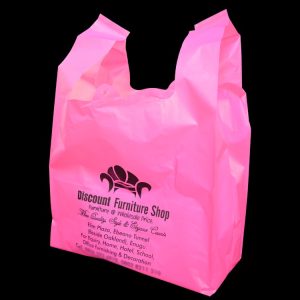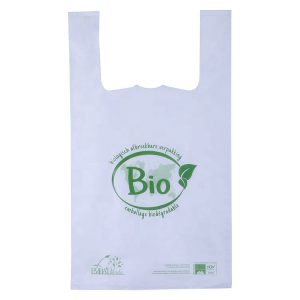Varieties and advantages and disadvantages:
1. Polyethylene (PE)
Polyethylene is a high-molecular polymer of ethylene and a thermoplastic. According to its industrial production methods, there are high-pressure, medium-pressure, and low-pressure polymerization methods. Different production methods have very different molecular structures, and product properties also vary with molecular structure.
Polyethylene is a milky white waxy solid, lighter than water, softer, good water resistance, low temperature resistance, odorless, non-toxic, poor heat resistance, poor film air tightness, and sensitive to ultraviolet rays. It is easy to oxidize and age, and the thermal shrinkage changes greatly, and the printing performance is poor. According to its density. It can be divided into high-density, medium-density, low-density polyethylene, and linear low-density polyethylene.
2. Polypropylene (PP)
Polypropylene is a by-product of petroleum refining, propylene, and the refined propylene monomer is polymerized under the catalysis of a catalyst, and then separated from the polymer. The molecular weight is 100,000 to 500,000, and the density is very small, which is the smallest among known plastics; non-toxic, odorless, high transparency, mechanical properties, surface strength, friction resistance, chemical corrosion resistance, and moisture resistance are all good; at room temperature Above, the impact resistance value is large, but the low temperature impact resistance value is small; it is prone to static electricity, and the printing performance is not good. Polypropylene has a wide range of raw materials, low price, and wide adaptability of performance. It is widely used in the food industry. It is mostly used to make films and composite films. It has good transparency and surface gloss, and can withstand a temperature of 120 degrees; it can be made into packaging boxes, blow molded into plastic bottles, and some fillers can be added to make certain machine parts.
3. Polystyrene (PS)
Polystyrene is made from ethylene and benzene catalyzed by anhydrous aluminum trioxide, undergoes an alkylation reaction to generate ethylbenzene, and then undergoes catalytic dehydrogenation to obtain styrene. Styrene monomer is heated and polymerized into polystyrene in an aqueous suspension of an appropriate amount of initiator (benzoyl peroxide) and dispersant (polyvinyl alcohol). Polystyrene is a colorless, transparent, and non-ductile thermoplastic; non-toxic, odorless, odorless, good colorability, moisture permeability is greater than polyethylene, low moisture absorption, dimensional stability, good gloss; processing properties Good, low cost; mechanical properties increase with the increase of molecular weight; low heat resistance, can not be used in boiling water; low temperature resistance, can withstand low temperature of -40 ℃; good indoor aging resistance; to alcoholic organic solvents , Mineral oil has good tolerance, acid and alkali resistance is also very good.
Because of its superior performance, low price, and wide application, polystyrene can be made into films and containers, and is widely used in the food industry; the shrinkage rate can reach 60-70%, and it is a good material for making shrink packaging and has good insulation properties. It can make a variety of telecommunication parts; it can also make all kinds of machine parts, toys, daily necessities, etc.; adding foaming agent to polystyrene can make foam plastic, which is a good cushioning packaging material.
4. Polyvinyl chloride (PVC)
Polyoxyethylene is a suspension polymerization or emulsion polymerization of vinyl chloride to produce polyvinyl chloride through the action of primers. It is light brown, transparent, good toughness, density 1.4g/cm; it has good chemical stability, is not easy to be corroded by acid and alkali; it has good air tightness, water resistance, heat-seal performance, good printability, and production energy consumption Less, cheap; mechanical strength, wear resistance, pressure resistance are better than polyethylene and polypropylene. The main disadvantages are poor thermal stability, easy decomposition when heated, and release of hydrogen chloride gas. Due to the different types and quantities of additives, such as plasticizers and stabilizers, polyvinyl chloride can be made into different products and can produce hard products, such as hard pipes, building materials, etc.; it can be used to make artificial leather, wire and cable insulating layers, Plastic floor, etc. Its main function in packaging is to make a film, which is divided into three types: soft film, hard film, and shrink film. The soft film has a soft texture and good heat-sealability, suitable for high-frequency sealing; low tensile strength and high tearing strength; poor sliding properties and poor processing performance. The tensile strength and tear strength of the rigid film are relatively large, the texture is harder, and the elongation is small; the moisture permeability is small, the gas barrier property is good, and the sliding property is good; the printing adaptability is good, but the appropriate ink solvent must be selected; It has poor temperature resistance and becomes brittle at low temperatures. The shrink film has good transparency, low air permeability, shrinks when heated, a wide shrinking temperature range, and a large shrinkage rate. It is a good heat shrinkable packaging material. According to different production processes, it can be divided into dry stretching. Tubular stretching and longitudinal and horizontal unidirectional stretching and other varieties.
5. Polyester (PET)
Polyester is a polycondensation product of terephthalic acid and ethylene glycol. Compared with other plastics, polyester has excellent barrier properties, such as carbon dioxide, oxygen, water and fragrance, etc. It can block well; with excellent mechanical properties, it has high strength, compression resistance and impact resistance. ; Good chemical stability, resistance to acid and alkali corrosion; high transparency, good gloss and optical properties; non-toxic, tasteless, in line with food hygiene standards; its structure has ester groups, so the printing performance is good. Polyester is a unique and versatile packaging material. Film can be made into packaging containers such as bottles, cans, cups, etc., and it can also be used as a dual-purpose bakeable tray.
6. Phenolic (PF)
Phenolic resin is formed by polycondensation of phenols (mainly phenol) and aldehydes (mainly formaldehyde). Depending on whether the catalyst is acidic or basic, the ratio of phenol to formaldehyde is different. Thermoplastic resin or thermosetting resin can be obtained. The two can be transformed into each other under suitable conditions. In practice, thermosetting resins are often used. Phenolic resin has good mechanical strength and thermal strength; good moisture resistance and corrosion resistance; easy processing and low price.
After the phenolic resin is processed with different fillers, curing agents, etc., different phenolic plastics can be prepared. Various sheet fillers are added to thermosetting resins, and laminates with various properties can be obtained after lamination; adding foaming agents can make phenolic foam; when phenolic plastics are used for packaging, phenolic resin is mixed with fillers and cured Moulding powder, coloring agents, etc., are then molded into bottle caps, machine parts, daily necessities, and some packaging containers.
Phenolic plastic products have good chemical stability; excellent heat resistance; high mechanical strength and wear resistance; not easy to deform, but poor elasticity; good electrical insulation; monotonous color, mostly dark red or black. Since its main raw materials are phenol and formaldehyde, both of which are toxic to a certain extent, it is not suitable for food packaging materials.








